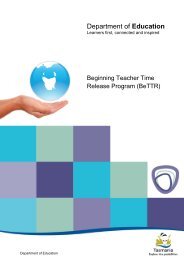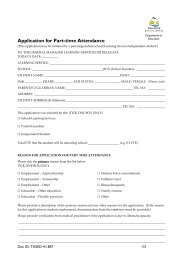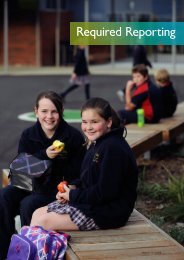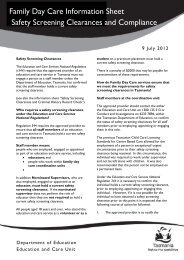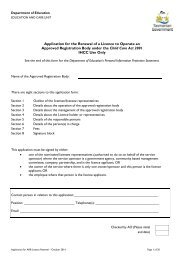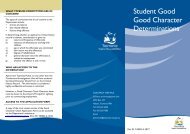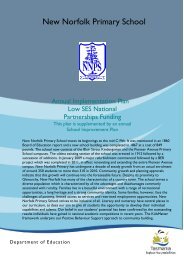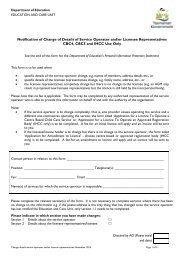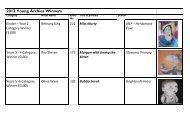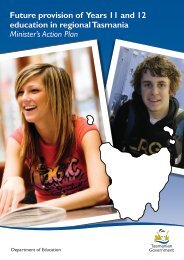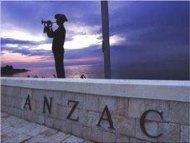PLANNING OFF CAMPUS ACTIVITIES
Procedures for Planning Off Campus Activities - Department of ...
Procedures for Planning Off Campus Activities - Department of ...
- No tags were found...
You also want an ePaper? Increase the reach of your titles
YUMPU automatically turns print PDFs into web optimized ePapers that Google loves.
open crossings may be included<br />
Crossings of less than 10 nautical miles<br />
Breaking (overtopping) waves (sea) up to 1 m<br />
Surf to 1 m.<br />
Operations may also be conducted in conditions that exceed the above where a documented hazard<br />
identification and risk management process has been undertaken to ensure the participants’ skills<br />
and equipment are appropriate to the environment.<br />
Equipment<br />
Kayaks and canoes and associated accessories used in all activities shall be of a type that is suitable<br />
for the nature and duration of the activity, the conditions expected during the activity, and the skill<br />
levels of all participants.<br />
Kayak paddlers are to wear spray decks on white water and the sea.<br />
All paddlers must have:<br />
<br />
<br />
<br />
<br />
appropriate clothing for the duration of the trip<br />
a Lifejacket meeting Australian Standard Specification for Level 50 (AS 4758) (previously<br />
Type 2)<br />
a helmet designed for kayaking<br />
suitable footwear.<br />
The trip leader must have easy access to:<br />
<br />
<br />
<br />
<br />
<br />
<br />
<br />
a spare (breakdown) paddle<br />
a marine (pea-less) whistle<br />
throw bag<br />
the basic equipment required to facilitate a Z-Drag rescue i.e. prussic loops and three<br />
Karabiners<br />
an appropriate knife or cutting device<br />
an appropriate length of rope for rescue<br />
basic repair kit (minimum - roll of duct tape)<br />
The sea trip leader should carry the required sea kayaking equipment as outlined by MAST<br />
appropriate for the activity and area of operation, such as:<br />
<br />
<br />
<br />
<br />
<br />
<br />
<br />
maps and/or marine charts<br />
compasses and GPS receivers<br />
a marine (pea-less) whistle<br />
a mobile and/or satellite phone<br />
a signalling mirror, torch, strobe light<br />
marine VHF radio (operators should hold the Marine Radio Operator’s VHF Certificate of<br />
Proficiency)<br />
flares (red, smoke, parachute)<br />
Please refer to the online copy of this document (TASED-4-1765), located on the Tasmanian Department<br />
of Education’s website to ensure this version is the most recent. P a g e | 51




